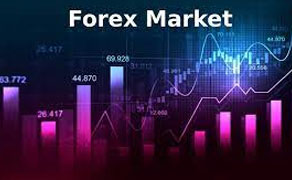The foreign trade industry, generally known as Forex or FX, is the largest and many liquid economic industry in the world. It works 24 hours each day, five days weekly, enabling traders from about the world to purchase, provide, and trade currencies. For new traders, knowledge the way the forex market works is vital to navigate its difficulties and seize opportunities.

At their primary, the Forex industry is really a decentralized marketplace where currencies are dealt in pairs. This implies when you get one currency, you are simultaneously offering another. Each currency pair includes a base currency and a offer currency. For instance, in the pair EUR/USD, the euro is the bottom currency, and the U.S. buck may be the estimate currency. The price tag on the set suggests simply how much of the quote currency is necessary to acquire one unit of the beds base currency.
Trading in Forex is driven by factors such as for instance economic indications, geopolitical events, fascination charges, and market sentiment. Central banks, economic institutions, corporations, and retail traders all participate in this industry, influencing currency values through their transactions. This variety of participants plays a part in the high liquidity and volatility quality of Forex trading.
One of many special facets of Forex trading is leverage. Brokers often give traders with influence, allowing them to get a handle on a bigger place than the money they've deposited. While leverage may amplify gains, it also increases chance, making it important for new traders to use it wisely and apply effective chance administration strategies.
Unlike stock areas, Forex does not need a centralized exchange. As an alternative, trading happens over-the-counter (OTC) through electronic systems and telephone systems. This structure means rates may vary somewhat between brokers, but overall, it assures constant trading and quick performance of orders.
New traders should also become knowledgeable about basic trading concepts such as quote and question prices, spreads, and buy types. The bid cost is what consumers are ready to fund a currency, while the ask value is what vendors want. The huge difference between those two rates is called the spread, which presents the price of trading.

To succeed in Forex trading, training and practice are vital. Many brokers provide test reports where traders can practice without risking actual money. Developing a trading approach, setting realistic targets, and sustaining discipline are essential steps toward long-term success.
In conclusion, the Forex market offers substantial possibilities for traders but requires a solid understanding of its technicians, risks, and strategies. By developing understanding and experience, new traders can confidently engage in this energetic marketplace.
